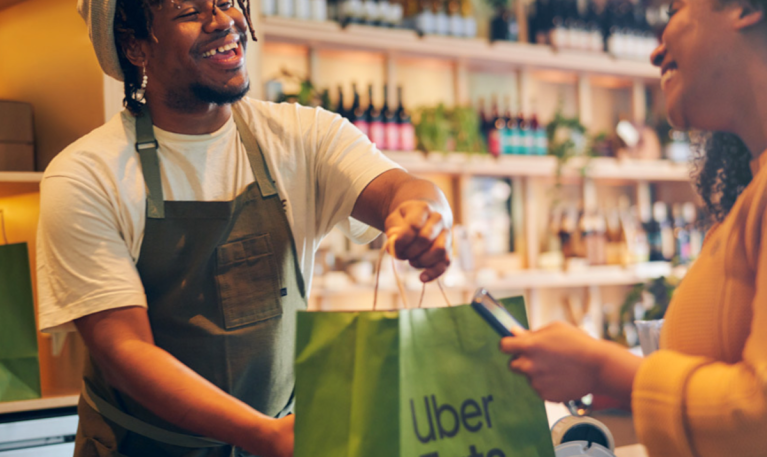
Uber Eats now has 1 million merchants around the world on its platform.
These partners include restaurants, grocers and convenience stores ranging from small businesses to international chains, Uber said in a Monday (April 8) press release.
The online ordering and delivery platform reached the milestone of 1 million merchants about 10 years after it was piloted under the name UberFresh with a handful of restaurants in Los Angeles, according to the release.
Following that pilot in 2014, the company scaled its food delivery service to New York City, Chicago and Barcelona, partnered with more restaurants and launched Uber Eats as a standalone app in Toronto in 2015, the release said.
Today, Uber Eats has expanded to more than 11,000 cities across six continents, per the release.
“As our partnerships have grown from local restaurants to multi-locations chains, grocery, convenience, liquor stores and more, we’ve needed to invest in building a platform that could support a variety of merchants and item catalogs,” the press release said.
To meet these different needs, Uber Eats has built an inventory management system that can handle hundreds of thousands of items, giving merchants a way to quickly build their lists and allowing consumers to see real-time item availability across storefronts, according to the release.
The company’s tech also supports merchants’ new menus and promotional concepts, per the release.
“The road from a handful of California restaurants to the global scope and incredible variety of partners we work with today has been quite the journey — and we’re incredibly excited for the future,” the press release said. “There’s so much more we can do to support the business goals of merchants who want to grow through delivery and our teams are hard at work to do just that.”
In one of its most recently announced collaborations, Uber said Thursday (April 4) that it formed a partnership with The Vitamin Shoppe to make the health and wellness retailer’s products available on the Uber Eats marketplace.
PYMNTS Intelligence has found that 40% of consumers have used an aggregator at least once in the last six months. In addition, 44% of aggregator users said they were making more purchases via aggregators than they did in the previous year, according to “Connected Dining: Third-Party Restaurant Aggregators Keep the Young and Affluent Engaged.”